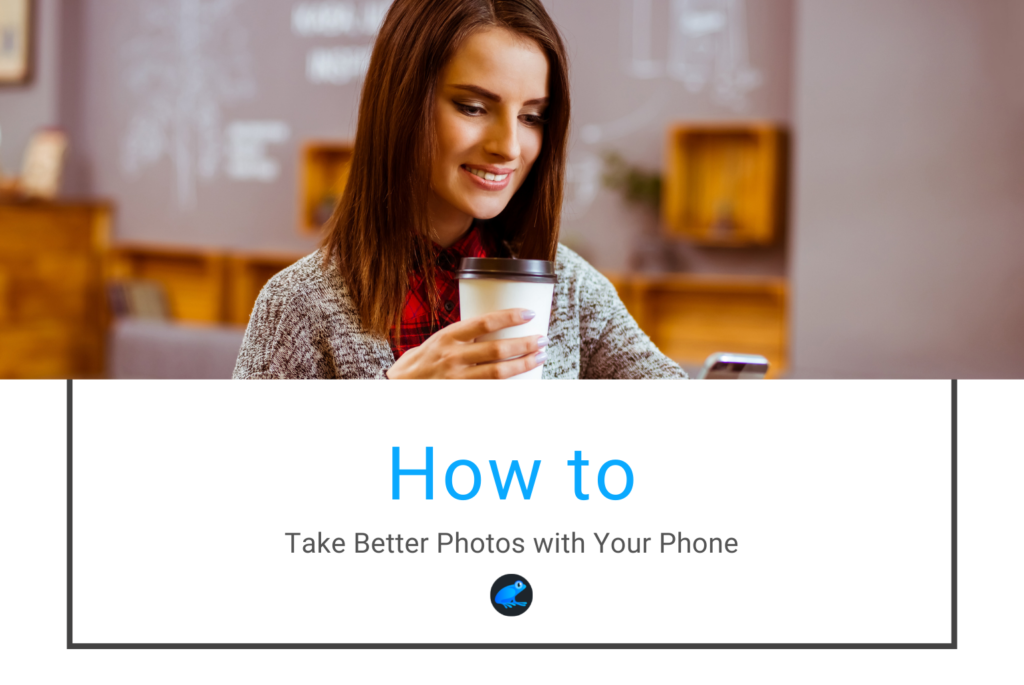Most phones today have everything you need to take stunning photos.
To enable you to make the most of your smartphone camera, we’ve put together a list of simple but practical tips:
1. Enable Gridlines
Most smartphone cameras today have a Grid feature that lets you segment your view into multiple squares.
The most common gridline setup follows “the rule of 3” -> 3 vertical and horizontal segments.
This setup will help ensure a more balanced composition. Once your screen is divided into 9 equal parts, you should then position the elements/people you want as the primary focus of your photo at the intersection of the gridlines.
Your subject will therefore never simply be centered in your image – and this will give your photo a more professional look.
Here’s a bonus tip on gridlines: if you’re taking a picture of a landscape, try to position the horizon so that it follows one of the horizontal gridlines.
2. Consider your lighting.
In terms of great lighting setups, nothing beats natural light.
Try taking photos outside at different times of day, both in the shade and directly under the sun and see how the lighting affects the overall feel of your photos.
You’re probably familiar with the term “golden hour” – that time just before sunset when sunlight has almost a golden tint to it.
Take advantage of this! It can make a huge difference in your photos and the best part is you don’t need any fancy or expensive equipment to do it. The sun does all the heavy lifting for you.
When taking photos outside, just keep in mind that photographing your subject in plain daylight might create undesired shadows or your subject might find it difficult to be relaxed and… keep their eyes open! So if you are taking photos of an outdoor event at lunch, you could try looking for a bit of shadow for your subjects.
Now, we’ve talked about natural lighting and outdoor photos, but what if you want to take your photos indoors, let’s say to photograph a product or object?
You could try to place them as close to natural light as possible or use simple white cardboard, for example, to reflect light and avoid visible shadows.
Pro tip – to help bring more focus to the main element of your photo, especially if your subject is more or less centered, you can darken the corners.
If the image turns out to be too dark (it’s always easier to lighten a dark photo than the other way around), you can adjust that when you edit your photo with Ribbet.
3. Adjust focus and exposure
By simply tapping on your screen you can set where you want the focus of your image to be and to set your exposure level. This will help you improve the clarity and light levels of your main subject.
By tapping on the dark part of your image, you’ll expose more shadows.
By tapping on the bright side, you’ll underexpose your image.
4. Don’t zoom in
Zoom features on digital cameras typically reduce your photo’s quality the more you zoom in.
You might get a blurry effect and a low-quality picture. Try getting closer to the subject instead, if possible and safe, or edit your picture later by cropping it to narrow in on the area you’re interested in.
5. Play with the composition
Here are some ideas to help you leverage composition in order to make your photos more eye-catching:
Take spontaneous pics instead of staged ones – anyone can tell a fake laughter from a real one. It doesn’t matter if everything doesn’t look perfect, that will make your image more natural.
Look for the extraordinary – take your smartphone outside and look for great spots that aren’t often photographed (i.e. avoid heavy tourist locations).
Experiment with composition – photograph patterns, natural symmetries or asymmetries, take black & white pictures, find curious natural shapes, use mirrors or bodies of water to photograph reflections, add some props, etc – get creative!
Try taking photos from ground level or flip your phone upside down (experiment with different angles)!
We post a lot of ideas that could inspire you on our Instagram account, so make sure to follow @ribbetapp!
6. Consider enhancing your photo quality with some external gadgets.
To give your photos a boost, you could try to purchase wider, external lenses for smartphones. Add-on lenses can help you take ultra-wide shots, fish-eye shots or shots of very small and close details.
Moving on, a good photo is a clear one – so a tripod might come in handy!… and if that doesn’t work for you and your image turns out blurry, you can also edit it later using the sharpening feature that comes with Ribbet.
If you’re fond of selfies, a selfie stick will get the job done better by extending your distance from your phone past arm’s length.
7. Think for social media
It’s very important to follow each social channel’s rules when it comes to image size. For example, native Instagram feed content should be square, stories should be portrait and Facebook posts can be landscape. You can plan this and take pictures accordingly either by how you orientate your phone or where you position your subject.
Take into consideration that even when you’re taking portrait photos, your camera might actually have a wider angle than the size used by Instagram and Facebook stories – so you might want to leave some extra space on either side of your photo.
If you didn’t follow size rules, but would like to prepare a photo for social media, you can use the Crop feature and adjust it accordingly. With Ribbet, the Crop feature already has presets for different social channels to help you speed up the preparation process.
Now for the challenge:
Next time you’re taking a photo of a tall landmark, instead of bending and trying to find the best angle to fit it all in your photo, take a vertical Panorama. See how that helps you get a different result and let us know if you liked how it turned out by tagging @ribbetapp when you post it to Instagram!





1 Comment
Pingback: 10 inspiring ideas for memorable summer pics – Ribbet Blog